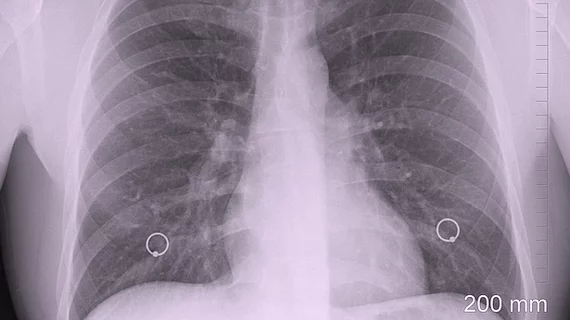Technologists can interpret chest x-rays as well as radiologists
With the appropriate amount of education and training, technologists can interpret chest x-rays with the same level of diagnostic accuracy and quality as radiologists, according to a study published May 1 in Academic Radiology.
For the study, 10 radiologists and 11 radiographers interpreted a total of 106 adult chest x-rays performed at Homerton University Hospital in London and referred by a hospital-based clinician between April 1, 2011, and March 30, 2012.
Participants were provided each patient's age and gender, referral source (emergency department, outpatient, inpatient) and clinical history according to the referring clinician at the time the x-ray was requested.
"A noninferiority approach was used, with predefined margin of clinical insignificance of 10 percent of average consultant radiologist diagnostic accuracy," wrote lead author Nick Woznitza, PhD, MASMIRT(AP), from the radiology department at Homerton University Hospital, and colleagues.
For each case, participants were required to localize and characterize abnormalities based on a scale from one ("uncertain") to four ("definitely abnormal"). Researchers used a jack-knife alternate free-response receiver operating characteristic (JAFROC) methodology to evaluate the performance of the radiographers and radiologists.
Diagnostic accuracy of the reporting technologists was "noninferior" to the radiologists, the researchers wrote.
"There was no apparent difference in diagnostic accuracy between the consultant radiologists and reporting radiographers for different current annual workload and experience," Woznitza et al. wrote.
Despite having a small sample size in a controlled setting rather than clinical practice, the researchers explained their findings reveal that technologists have the required skillset to be part of "a sustainable strategy to meet additional clinical demand and diagnostic capacity requirements."

